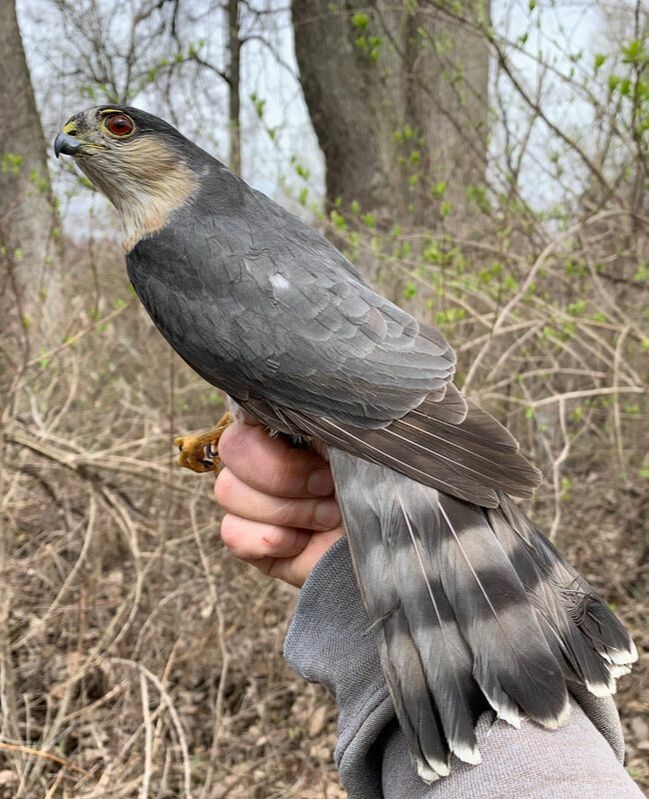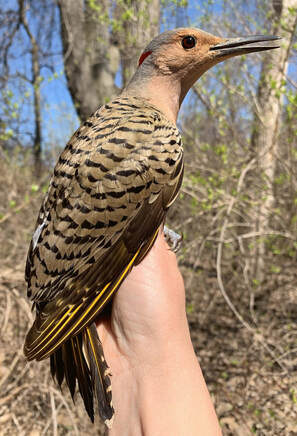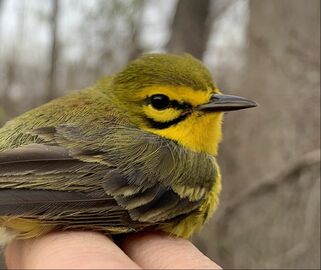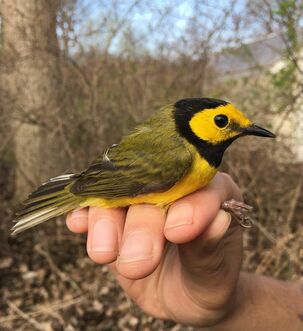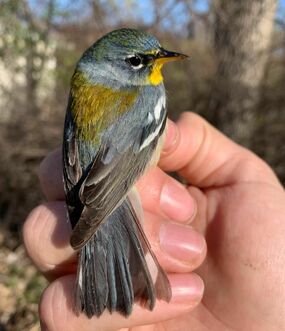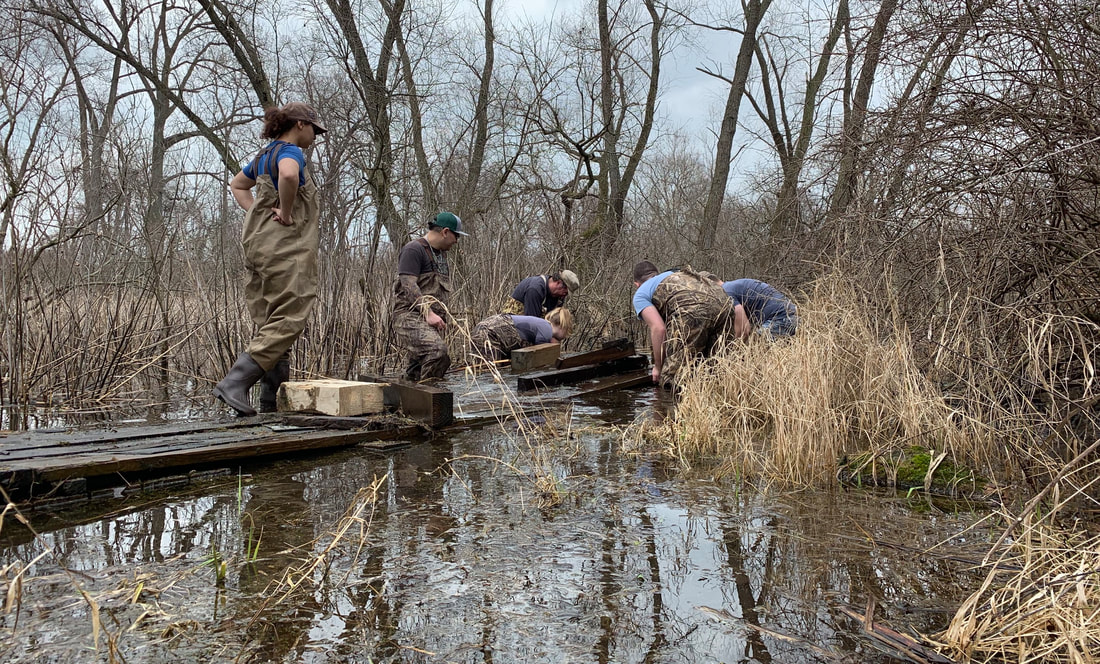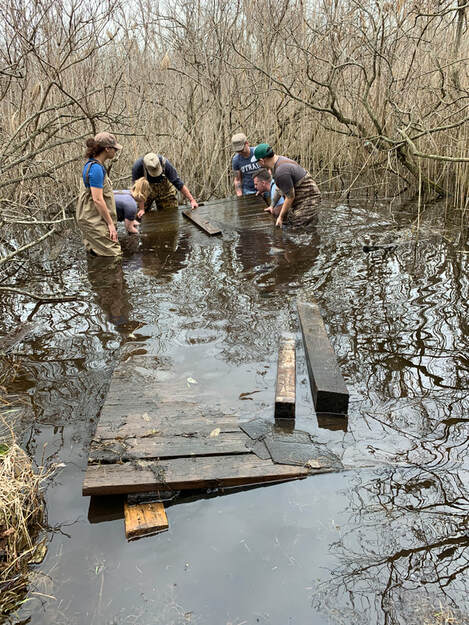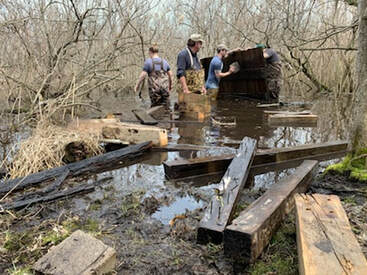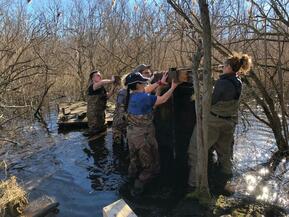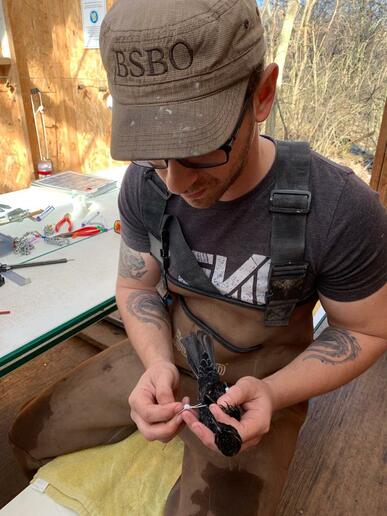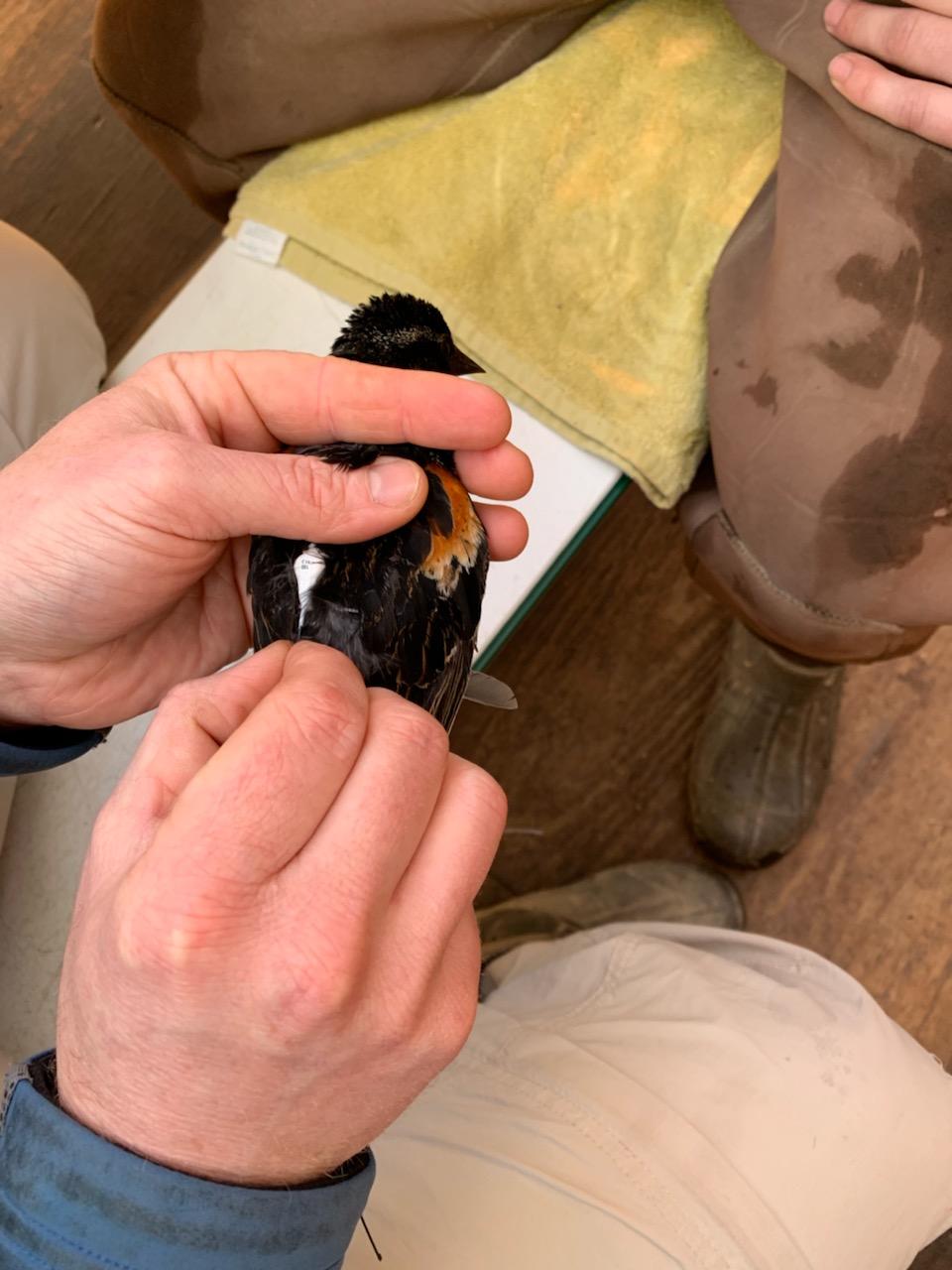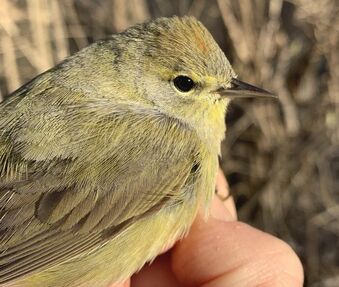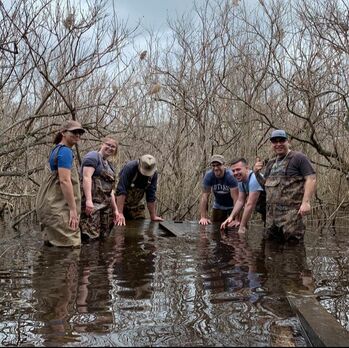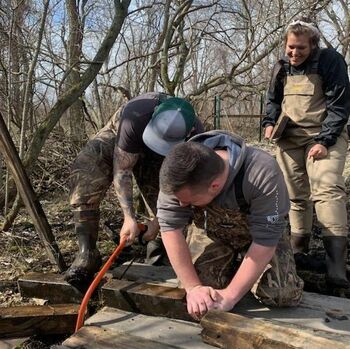Enjoying our blogs?Your support helps BSBO continue to develop and deliver educational content throughout the year.
|
|
Well, after a week of raising our boardwalks out of the drink, last week we were finally ready for the research crew and volunteers to enter the marsh and officially commence banding operations. After being in the marsh for a week prior, we already had an idea of the progression of migration and the species we would catch. But we’ve also had some surprises. This season, more than any in recent memory, has been heavy with Blue-gray Gnatcatchers and we’ve been able to band quite a few. Part of this has been the wind and rainy weather driving them down from the canopy and into the range of our mist nets. Speaking of wind, we’ve also captured an American Kestrel and Sharp-shinned Hawk, who on windy days get forced down from the skies and in range of our nets. As the third week of April began to wane, and Golden-crowned Kinglets and Brown Creepers stopped making appearances, we were in the right time frame to catch some early overflight migrants. These are migrants that typically breed farther south in Ohio, but occasionally get caught up in the overnight winds, overshooting their intended destinations and landing in the lakeshore marshes. Of this group of migrants, we were able to catch a couple of Louisiana Waterthrushes, a Prairie Warbler, and a Pine Warbler (species that are fairly infrequent at the station).
Even though we were catching birds in the double digits, our first real good day of migration came on Tuesday April 23, when winds shifted to the southwest and we had our first 100-bird-day. With this shift, it was almost as if we were in a whole new marsh! We had our first encounters with Eastern Whip-poor-will, Blue-headed and Warbling Vireo, Scarlet and Summer Tanager, Yellow Warbler, Ovenbird, Hooded Warbler, Northern Parula, and Swainson’s Thrush. And not too long after this we also banded our first Gray Catbird for the season. As random as migration may appear, through years of research by BSBO, we’ve been able to identify the pattern of migration through the region, and establish when and which species will arrive. This pattern-knowledge is further strengthened by an understanding of how weather affects bird movement. Using this combination we are pretty accurate with our predictions and have a good idea of what to expect each day we head in to the marsh. Thus, we were pretty sure (ok… we knew) that Tuesday was going to be a good day. What’s neat about this understanding is that it doesn’t take away from the magic of migration in any way. Understanding the factors that drive birds and being able to predict their arrivals and departures reveals a pattern of the natural world, making the spectacle that is migration even more fascinating and awe inspiring!
As we come to the close of April we are hoping that the old saying is true: "April showers bring May warblers." We have had quite a few days of rain and wind hammer northwest Ohio, and are interested to see how persistent northerly winds have affected the progression of migration through the region (especially as we head towards BSBO's Biggest Week In American Birding). Current weather forecasts indicate that Wednesday and Thursday, the 1st and 2nd, could be suitable days for migration; bringing in more Yellow Warblers, Prothonotary Warblers, and Swainson's Thrushes, among others.
0 Comments
As long as winter may have felt, the icy winds and snow have quickly faded, and the BSBO research team is back out in the Navarre Marsh, ready to begin operations for the 2019 spring migration season. Well… we were almost ready. With heavy precipitation and strong northerly winds throughout the winter months, the section of marsh the banding station is situated in has been completely inundated by water. We experienced this a bit last year (which aided in catching some of our first-ever Belted Kingfishers), but this year is a whole different level of “flooded.” To best capture birds and sample the movement of different species through the marsh, many of our nets run over boardwalks to get into aquatic habitats such as buttonbush swale. However, the marsh has decided to take these boardwalks for her own and many of them succumbed to the murky waters. For the safety of the birds, volunteers, and staff that work in the station, banding operations could not start until these boardwalks were raised. Thus, a week that could have been spent banding birds and collecting early migration data, was spent waist-deep in the frigid marsh waters, shoving blocks of wood under water-logged boardwalks. Oh what fun! Normally, the research team heads into the marsh a week before our (amazing) volunteers begin coming out. Generally we take this time to get things set up, work out any kinks, and get ourselves back in the groove of banding birds. Not so much this year. Instead we spent four and half days elevating platforms (in some instances, literally elevating the whole thing out of the water), rebuilding some boardwalks, and constructing extensions to span formerly dry areas. As grueling as it was, we had a pretty fun few days getting to know the marsh bottom and the boardwalks a little better; days filled with laughs, sore muscles, leaky waders, and some good ol’ fashion marsh ingenuity. While we weren’t able to operate during this construction time, we did have any opportunity to receive some new training. In collaboration with Powdermill Avian Research Center and others, BSBO will be affixing radio transmitters to certain species this year as part of a project spanning the Lake Erie shoreline. So while we didn’t get to fully operate the station last week, our research team did learn proper techniques for fitting radio harnesses to birds including sizing, actually fitting a harness to a bird, proper tightness, and positioning. Stay tuned for more on this topic as the season develops! 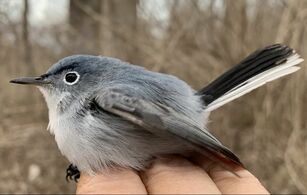 Blue-gray Gnatcatcher Blue-gray Gnatcatcher Finally, after some long, cold days, loads of lumber, and a couple boxes of screws… we were ready to begin banding on Friday the 12th (with the confidence that our feet and nets would stay dry). From being in the marsh earlier in the week, we could already tell from mere observations that there was definitely some good migrant movement occurring in the region. Even though we were a little late to start sampling birds, on Friday and Saturday we were able to catch some remaining Fox Sparrow, American Tree Sparrow, Slate-colored Junco, and Red-breasted Nuthatch. With most of these “winter” birds leaving, others have rapidly been replacing them and the marsh has been filled with the sounds of Ruby-crowned Kinglet, Brown Creeper, Blue-gray Gnatcatcher, White-throated Sparrow, and Myrtle Warbler. And while not totally unexpected at this time, with shifting winds going into Saturday, we were happily surprised to encounter an Orange-crowned Warbler, White-eyed Vireo, and House Wren. Similarly to last year (but more so this season), it will be interesting to see how water levels in the marsh will affect bird movement and our ability to catch them in this incredible, ever-changing habitat. One thing’s for sure though… we’re ready to have a great season filled with birds, friends, and new opportunities to learn more about the wildlife we study, and how we can continue to apply our research to conservation. Thank you to all those that make this important research possible by volunteering your time, supporting BSBO and its efforts, and promoting science and conservation.
|
AuthorsRyan Jacob, Ashli Gorbet, Mark Shieldcastle ABOUT THE
|
